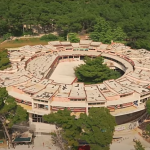ZAGREB, April 1, 2018 – Estimates about demographic trends show that in the future Croatia could have problems with labour shortages and pressures on the pension system and budget, so dealing with negative demographic trends and structural problems remains a challenge in the creation of macroeconomic policies, Raiffeisenbank Austria (RBA) analysts said in an analysis.
Projections on population ageing released at the end of 2017 by the European Commission put Croatia among countries with pronounced negative trends and show that by 2030 the country’s population is expected to shrink to 3.9 million, while by 2070 it could further dwindle to 3.4 million.
Apart from depopulation, another worrying trend is a continued decline in the share of young people in the total population, as indicated by a continued drop in the number of newborns. The 14.6% share of children aged 0 to 14 in the total population is expected to drop to 13.6% by 2030 and to 13.2% by 2070, RBA analysts say in the analysis.
The share of the most economically productive part of the population – people aged 25 to 54 – is estimated to drop from 40.3% to 38.1% by 2030 and to 33.5% by 2070, while the share of the working age population aged 15 to 64 is expected to go down from 66% in 2016 to 55.6% by 2070.
“The significant drop in the working-age population will have a considerable impact on the labour market,” the analysts said. They note that population ageing and dwindling inevitably lead to a decrease in the share of the working age population. “This will cause labour shortages and create pressures on the pension system and the budget,” the analysts said.
Their estimate is backed by EC projections which show that the share of people aged over 65 in the total population will rise to 31.2% by the end of the projection period or by 11.8 percentage points compared to 2016.
The share of people aged over 80 in the total population will rise to 23.3% or 15.8 percentage points more than in 2016.
Population ageing, with a consequent drop in the working-age population, continues to hamper positive changes in the labour market, the analysts said.
Structural labour market weaknesses, such as imbalances between labour offer and demand and a low level of employment and activity, are still present, the analysts say, noting that Croatia is also faced with an accelerated process of emigration of the working-age population.
They consider the emigration of the working-age people to be due not only to the openness of the EU labour market and demand for skilled and highly educated personnel, but also a long-standing recession marked by a lack of key structural reforms in the economic sector.







